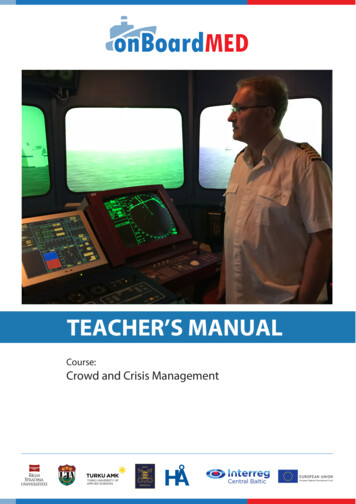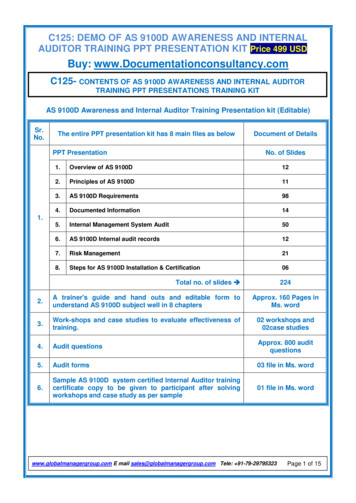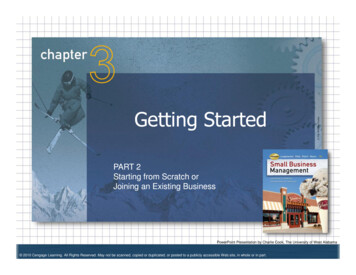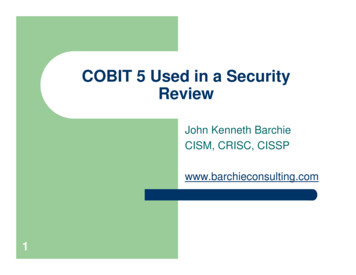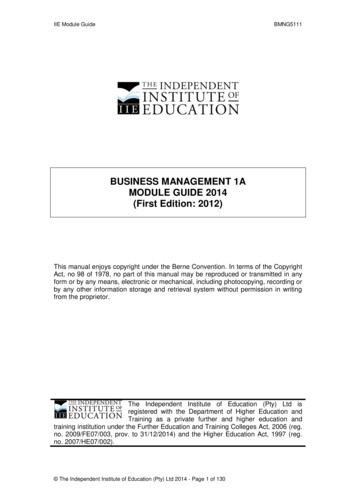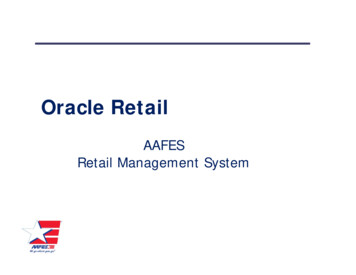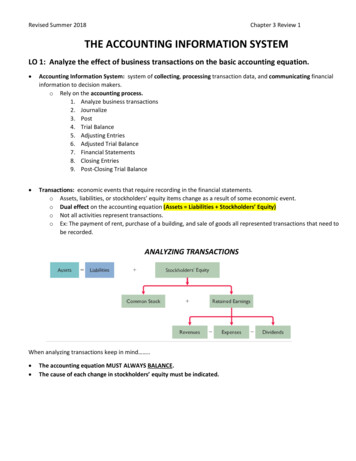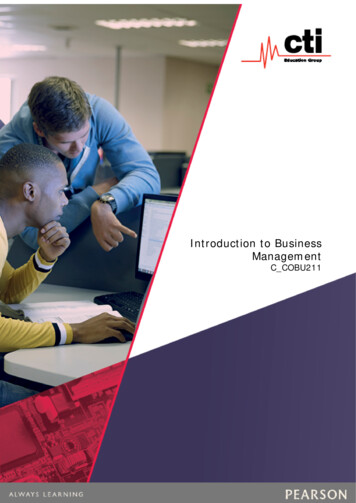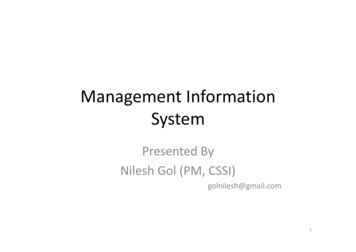
Transcription
Management InformationSystemyPresented ByNilesh Gol (PM, CSSI)golnilesh@gmail.coml il h@il1
Basic Book– James A O'Brien, Management Informationsystem 7th editionsystem,edition, Tata McGraw‐HillMcGraw Hill References– Ralph Stair and George Reynolds, Principles ofInformation Systems, 10th edition, New Delhi:Pearson Education.– James A. O'Brien and George Marakas,Management Information Systems, 9th Edition,New York: McGraw‐Hill– Laudon and Laudon, Management Informationsystems, 10th edition, Pearson Education.2
Websites– www.mhhe.com/obrien– www.prenhall.com/laudonh ll/l d Websites for Nepalese Context– www.nta.gov.npwww nta gov np (MIS report)– www.moic.gov.np3
Framework of MIS4
Foundation of Information Systems inBusiness Information SystemyIn Business The Components of Information System5
Management Managementgis the pprocess of ggettingg activitiescompleted efficiently and effectively with andthrough other people. Management functions: Planning, Organizing,Staffing,g, Directing,g, Coordinating,g, Reporting,pg,Budgeting, Controlling Management roles:– Interpersonal roles: Leader– Informational roles: Monitor,Monitor Spokesperson– Decisional roles: Entrepreneur, Disturbance handler,Resource allocator,, Negotiatorg6
Data vsvs. Information Data: raw facts Information: collection of facts organized insuch a way that they have value beyond thefacts themselves7
Table 1.1118
System conceptEnvironmentFeedbackSignalsFeedbackSi lSignalsControlSignalsControl byManagementControlSignalsInput ofRaw MaterialsManufacturingProcessOutput ofFinished ProductsSystem BoundaryOther Systems9
Fig 11.2210
Management Information System (MIS):Management level Inputs: High volume data Processing: Simple models Outputs: Summary reports Users: Middle managersExample:l AnnualAl budgetingb d i
Management Information System (MIS)
Management Information System (MIS) Structured and semi‐structured decisions Report control oriented Past and ppresent data Internal orientation
IT and IS What is Information Technology?– Anyy form of technologygy used byy ppeoplep to handleinformation. What are Information Systems?– Integrated components processing, storing anddidisseminatingi i informationi fi iin an organisation.i i– Interdisciplinary study of systems that provideinformation to users in organisations.Pyle, I.C. & Illingworth, V. (Eds) (1996). Oxford Dictionary of Computing, 4th Edition. Oxford / New York: OxfordUniversity Press14
Experiences of IT and IS Examplesl off IT– Hardware (PC, UNIX server)– Software (e‐mail, Internet, Windows, Word)– Consumer devices ((mobiles,, train times)) Examples of IS– File systems,systems databases,databases ee‐mailmail servers / clients– e‐commerce– SAP,SAP studentt d t recordsd15
Characteristics of Valuable Information Table 1.216
Attributes of Information Quality17
Fig 11.33 Elementsof systemand goals18
System classifications19
System Performance Efficiency: output/input Effectiveness: extent to which system attainsits goals P f Performancestandard:d d specificifi objectivebj i off asystem20
Fig 1.51521
Fig 11.6622
Fig 11.8823
Components of an Information System24
Why is IS Important? For an organisation to survive and prosper– More locations ((networking,g, Internet))– New products and services– Improve jobs and work flows: Efficiency CostC Ethical and social issues25
Information Economy70%60%% SERVICE50%% WHITE COLLAR40%% BLUE COLLAR30%% FARMING20%10%0%YEAR26
WHY INFORMATION SYSTEMS?Business agement Management ormation ng ControllingInformation Processing ActivitiesModeling andDecision MakingManagement ActivitiesBusiness ValueFigure 1‐4FirmProfitabilityandStrategicPosition
Majorj Roles of Information SystemsySupport ofStrategicAdvantageSupport ofManagerialDecision MakingSupport ofpBusiness Operations28
TOWARD THE DIGITAL FIRMThe Interdependence Between Organizations and Information Systems
Trends in Information Systems30
Typesyp of Information SystemsyInformation temsSystems
Other Categories of InformationSystemsExpert SystemsKnowledge Management SystemsFunctional Business SystemsCross‐Functional Information Systems32
MIS Outputs Scheduled reports Demand reports Exception reports33
Management Challenges of the E‐Business Enterprise IS Human Resources Business Strategies BusinessBusiness Processes Business Needs IS Development IT Infrastructuref IS Performance Organization Structure and Culturep User Acceptance Customer Relationships Businessu nPartnersn Suppliers Business CustomersEthicall ConsiderationsEthiC nsidti nsPotential Risks?Potential Laws?P ibl Responses?PossibleR?34
Basic Book – James A O'Brien, Management Information system, 7th edition, Tata McGraw‐Hill References – Ralph Stair and George Reynolds, Principles of Information Systems, 10th edition, New Delhi: Pearson Education. – James A. O'Brien and George Marakas,
